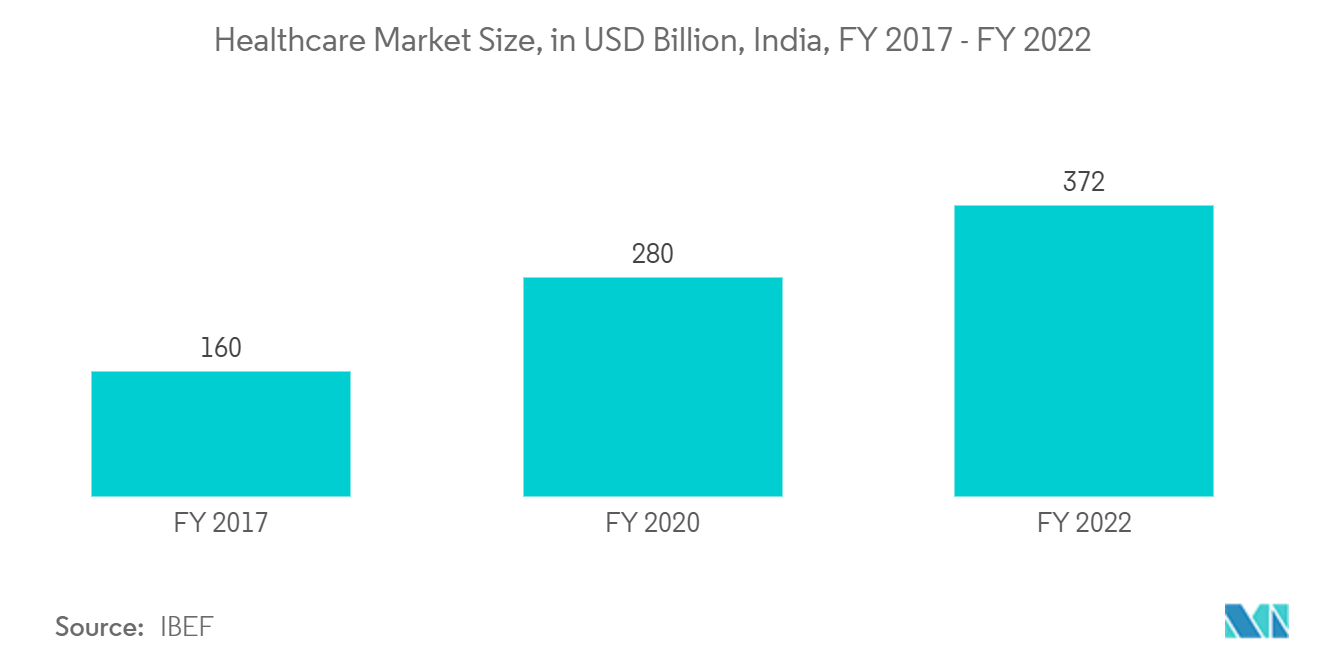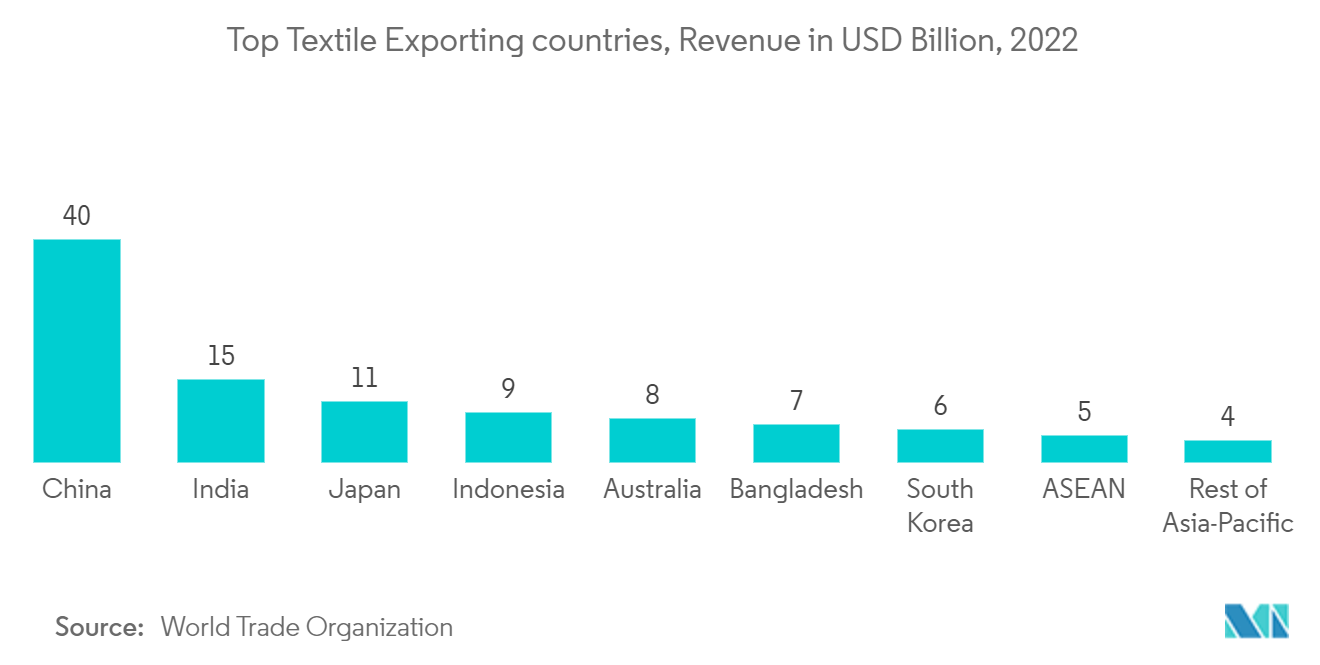Market Trends of Asia-Pacific Non-Woven Fabric Industry
Healthcare End-User Industry to Dominate The Market
- The non-woven fabric includes a wide range of applications in healthcare products, such as for dressings, surgical masks and gowns, surgical drapes, bedding, and implantable, like with its orthopedic applications, sutures, tissue structures, etc.
- Non-woven fabric is highly beneficial in terms of effectiveness, disposability, adaptability, and cost, with its wide applications in the healthcare industry. Non-woven fabric is one of the most effective materials for bacterial barriers. It is superior to linen in terms of reducing airborne contamination.
- In the Asia-Pacific region, the growing and aging population, rising prevalence of chronic diseases, infrastructure investments, and technological advancements are anticipated to boost the demand for healthcare in the coming years.
- Asia-Pacific is expected to witness a significant increase in the use of hygiene products over the forecast period due to the increasing adoption of female hygiene products in countries like India and China. In India, it is currently estimated that over ~60% of Indian women do not use sanitary care products. It is mainly due to the large population residing in rural areas. With the increase in the penetration rate of sanitary care products, owing to the increasing hygiene precautions, the market for non-wovens in the country is expected to grow rapidly.
- Furthermore, according to IBEF, in 2022, the Indian healthcare sector is expected to witness a three-fold growth. It grew to USD 372 billion in 2022 to USD 110 billion in 2016 witnessing a growth of 22% between 2016–2022. Thus, the growing healthcare industry in the country is expected to drive the demand for non-woven fabric.
- Similarly, in Japan, the healthcare market grew by over 50% over the last 20 years, while GDP grew by less than 10% over the same timeframe. The country holds a total of 179.4 thousand medical care institutions. Such a robust healthcare industry in the country is expected to drive the market for non-woven fabric in the country.
- Hence, owing to the factors mentioned above, the application of non-woven fabrics from the healthcare industry is likely to dominate during the forecast period.

China to Dominate the Market
- China is expected to dominate the market for non-woven fabrics during the forecast period. This is due to the rising demand for non-woven fabrics from the healthcare industry and growing application in the textile industry in this region.
- In the Asia-Pacific region, China is the largest economy in terms of GDP. China is one of the fastest economies and has become one of the biggest production houses in the world. China is the second-largest healthcare market in the world. The country aims to raise the healthcare industry's value to USD 2.3 trillion by 2030, more than twice its size now. The increasing healthcare industry will drive the current studied market in the country.
- In China, the textile industry registered significant market growth. According to the National Bureau of Statistics of China, textile production volume accounted for 38.2 billion m in 2022, compared to 23.5 billion m during the same period in the previous year.
- In 2022, China was the top-ranked global textile exporter, with a value of approximately USD 148 billion. Similarly, the European Union ranked in second place, with an export value of around USD 71 billion. The export value of textiles is further expected to increase in the coming years, thereby driving the current studied market.
- The demand for non-woven fabrics is increasing in the construction industry. According to the National Bureau of Statistics of China, the value of construction output accounted for CNY 31.2 trillion (USD 4.5 trillion) in 2022, up from CNY 29.3 trillion (USD 4.2 trillion) in 2021. China is expected to spend nearly USD 13 trillion on buildings by 2030. The increasing market in the country is expected to drive the market for non-woven fabrics in the country.
- China is the largest automotive vehicle manufacturer in the region. According to OICA (The Organisation Internationale des Constructeurs d'Automobiles), automotive vehicle production in China reached a total of 27.02 million units in 2022. It was an increase of 3% over the previous year for the same period. Thus, the growth in the automotive industry is expected to drive the market for non-woven fabric.
- Owing to the factors mentioned above, the market for non-woven fabrics in China is projected to grow significantly during the study period.


